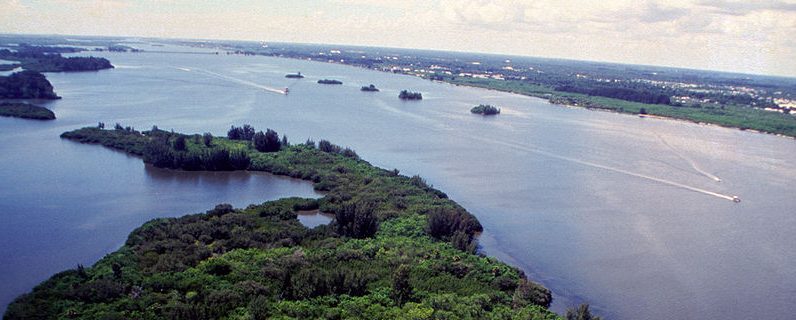Biodiversity of Indian River Lagoon Examined in New Study
The Indian River Lagoon is undeniably a biodiverse estuary. In numerous accounts over the years, in fact, it is described as “one of the most biologically diverse estuaries in North America.” New research from Florida Tech examining aspects of that claim found it may not be entirely accurate.
In “Biodiversity of the Indian River Lagoon System: A Cautionary Tale from the Birds,” Richard Turner, professor emeritus in biological sciences, examined the biodiversity of the Indian River Lagoon through its birds, known as avifauna. Using the annual Christmas Bird Count (CBC) from 1970 to 2018 at Merritt Island National Wildlife Refuge, he found that counts have never been the highest in the nation. For example, in the 2017 CBC, at least eight places in Florida and 83 in the U.S. overall had higher counts than the refuge. Of 543 “hotspots” where more than 250 bird species were recorded in coastal continental states as per ebird.org in November 2019, Merritt Island National Wildlife Refuge had 300 species of birds – but 110 sites listed more species.
Levels of overall biodiversity for the IRL have been reported in peer-reviewed and popular literature, in agency reports, in news media, on the web and elsewhere ranging from approximately 4,000 to 4,300 species. According to the new research, these estimates seem to have their origin as part of the state’s 1989 efforts to get the lagoon system designated an Estuary of National Significance and part of the National Estuary Program. The number in related documents – 4,315 species – was presented without citations or tabulation and was much higher than the 2,493 species listed in a documented report that was released in 1994. Only in more recent years has the documented diversity exceeded 4,000 species, according to the Smithsonian Marine Station in Fort Pierce.
Some researchers, such as Robert Day in his 1995 paper, “The IRLNEP and biodiversity in the Indian River Lagoon,” attributed the original biodiversity claim to R. Grant Gilmore, a source often cited in literature about lagoonal biodiversity. But Gilmore’s 1985 paper, “The productive web of life in the estuary,” provided no comparative data or citations. Only two sources – Paula Mikkelsen, Paul Mikkelsen and David Karlen’s paper “Molluscan biodiversity in the Indian River Lagoon,” and Judith Winston’s paper, “Ectoproct diversity of the Indian River coastal lagoon,” both released in 1995 – have given limited comparisons of IRL biodiversity to other estuaries for animal phyla, such as mollusks in five other estuaries and microscopic aquatic invertebrates called bryozoans in one other estuary. Turner’s research paper noted 586 species of fish from Sydney Harbor, Australia, which is more than the 397 species founded in Gilmore’s research.
“Indeed, the molluscan diversity in the lagoon is higher than in Biscayne Bay, Tampa Bay, Chesapeake Bay and a couple other places – not every estuary in the United States or North America, but at least in about five, which this study compared,” Turner said. “Mollusks are only one phylum out of many, many phyla of life on Earth and the lagoon.”
Turner utilized the birds of the IRL as a way of testing the unsupported claims. Gilmore’s 1985 paper reported, “Christmas bird counts on Merritt Island often represent the most [species-rich] count in the United States.” However, no comparison to other lagoons, citations or data were presented, and now Turner’s study refutes this claim with data.
Turner said he was inspired to research the lagoon’s biodiversity compared to other places based off his lectures as an instructor, specifically his summer field class on the natural history of the Indian River Lagoon.
“I would crow in my class about how incredibly diverse the lagoon is…one year, I thought, ‘What if a student challenged me on this?’ And I had to come up with a documentation for it,” he said. “Out of my own curiosity, I started to look into it, ‘So how diverse is life in the lagoon and how does it compare to other places?’”
For Turner, science is a way to discover new things, but also correct previous research. He sees re-evaluating the Indian River Lagoon’s previous claims of being the most biodiverse estuary as a way to make those corrections.
“One of the goals of science is to understand the natural world, but another goal is to test what we think we know, and if we find it out to be wrong, we’ve got to own up to it,” he said.





